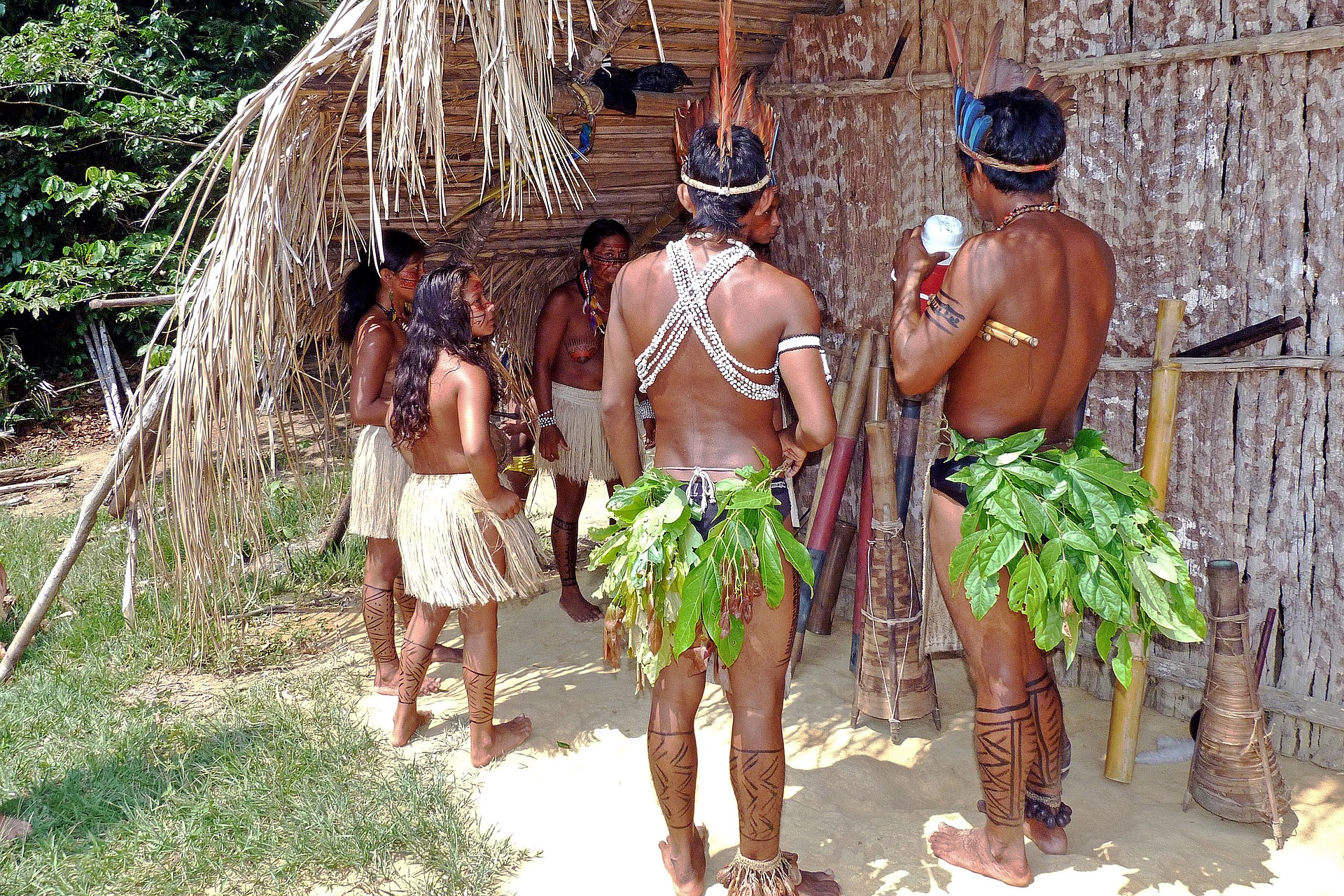Deep in the heart of the Amazon Rainforest, a huge municipality (about the size of Tennessee) is establishing a unique linguistic legacy: it has five official languages!
Sharing borders with Venezuela and Colombia, São Gabriel da Cachoeira has a population of under 50,000. About 80% of its inhabitants are Indigenous, with 23 of Brazil’s 300-plus ethnicities living in this municipality.
One Town, Many Ethnicities
As well as Brazil’s official Portuguese, the municipality of São Gabriel da Cachoeira has recognized Nheengatu, Baniwa, and Tukano as co-official languages since 2002. All are spoken in 750 nearby communities, together with Yanomamo, which was added to the official listing in 2017.
Although largely unknown to the outside world, their range is international:
- Nheengatu (14,000 speakers) is a Tupi dialect that was used by colonizing Jesuits as a lingua franca for communicating with Indigenous peoples throughout Amazonia.
- Baniwa (6,000 speakers) is an Arawakan dialect that is closely related to Curripaco and Carutana, linking communities in Brazil, Venezuela, and Colombia.
- Tukano (4,600 speakers) is an isolate that is spoken in two regions of western Amazonia, encompassing Brazil, Colombia, Ecuador, and Peru.
- Yanomamo (20,000 speakers) is a language isolate, spoken by largely monolingual Yanomami communities along the Amazon River in northern Brazil and the Orinoco River in southern Venezuela.
Note: Estimated numbers of speakers may have dropped during the COVID-19 pandemic, with no updated statistics available.
Echoes of Europe
This broad-ranging legislation is also preserving some almost-extinct European languages. In southern Brazil, nine European languages have been made official in municipalities targeted by European immigrants, particularly during the late XIX and early XX centuries.
With centuries of poverty and persecution culminating in a couple of World Wars, waves of immigrants flowed steadily across the Atlantic, seeking better lives in the New World. Many acclimated and merged into mainstream society, while others preferred to cling to their ancestral customs (and languages) in enclaves.
Some of these languages—like Pomeranian (Germany and Poland), Talian (a Venetian dialect), and Hunsrik (a German dialect spoken only in southern Brazil, Argentina, and Paraguay)—are now extinct in Europe.
Language as a Weapon for Social Equity
Despite limited funding and political support—still weak after four years of right-wing populism that ended with accusations of genocide filed in the International Criminal Court—the tide is turning. There are signs of better days ahead for Brazil’s Indigenous communities and their languages.
One of these harbingers is Brazil’s newly established Ministry for the Indigenous Peoples, headed by Minister Sônia Sousa Silva Santos, usually identified by her tribal roots: Sonia Guajajara. She was listed as one of the world’s 100 Most Influential People in 2022 by Time magazine.
Politics vs People
Perhaps spurred by Brazil’s rich patchwork history, this innovative concept of legislating languages at the municipal level is designed to preserve the cultural identities of specific communities. It’s also intended to boost social mobility, while preserving minority languages.
These Indigenous languages are becoming more visible because schools are now obliged to teach at least one of them. Local notaries must also have staffers who are bilingual, to assist tribespeople needing their registration services. This is being assured by an Indigenous Rights Oversight Panel set up by the Amazonas State Courts.
Ensuring access to documentation and registry offices is vital for Indigenous communities in Amazonia. Ownership of vast tracts of land (and their rich natural resources) is often hotly disputed, with lethal outcomes for even innocent bystanders—like indigenist Bruno Pereira and journalist Dom Phillips.
Arrows against AK47s
Agribusiness is a ruthlessly powerful player throughout this region, generating nearly a quarter of Brazil’s GDP, with over fifty million head of cattle in Amazonia. Another nefarious actor in the region is illegal mining, which pollutes rivers with mercury through gold panning, while deforestation fells ancient trees to clear grazing lands, and illegal burn-offs make way for huge single-crop plantations.
This is why it’s so important for institutions at all levels to start offering services to local communities in their own dialects. Their languages are the backbones of these threatened communities (often with limited Portuguese), which are in turn the guardians of their rainforest home.
Protecting the Protectors
More than ten million years old and once home to 390 billion trees, this vast river basin is an unrivaled sanctuary for biodiversity across much of South America. However, all these negative factors are pushing the Amazon Rainforest toward the point of no return, the tipping point for global warming.
Although not directly involved in preserving indigenous cultures, Trusted Translations is keenly aware of the importance of these ancient languages. Its highly qualified staff work on a daily basis with cutting-edge tools (like localization) that encourage internet users to opt for their native languages, instead of automatically opting for Portuguese online. Because forgetting this priceless linguistic heritage would be an irreparable loss for the entire world.
Image by Hans Schwarzkopf from Pixabay






